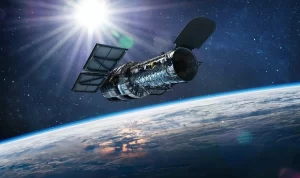Sun sensors are devices mounted on satellites. They mainly detect the Sun’s position and direction. They help satellites sense the Sun’s location relative to themselves in real time. Thus, satellites calculate their attitude accurately.
Sun sensors operate based on optics and electronics principles. Simply put, they measure the incident angle using sunlight properties. Satellites often employ multiple sun sensors. Engineers place them on different faces. Therefore, they achieve 360-degree field coverage.

Sun sensors vary by accuracy, design, and application. Here are the main types:
Coarse Sun Sensor (CSS)
CSS represents the most basic type. It offers 1–5 degree accuracy. Engineers use it mainly for initial attitude acquisition or backup. CSS remains small and lightweight. Thus, it suits small satellites like CubeSats perfectly.
Fine Sun Sensor (FSS)
FSS delivers much higher accuracy, reaching 0.01 degree. Operators employ it for precise attitude control. FSS usually incorporates optical lenses and CCD arrays. Consequently, it handles wider fields of view, for example ±60 degrees.
Digital Sun Sensor
This type integrates digital signal processing (DSP). It directly outputs digital angle data instead of analog signals. As a result, digital sun sensors have become widespread in modern satellites.
Analog Sun Sensor
Analog sensors output voltage signals. The satellite computer then converts these signals. They stay simple and reliable. However, their accuracy falls short of digital types.
Applications of Sun Sensors in Satellites
Sun sensors find wide use across various satellite missions.
For example, communication satellites must maintain geostationary orbit (GEO). Their solar panels always face the Sun. Sun sensors supply real-time data. Therefore, satellites adjust attitude through reaction wheels or ion thrusters. This ensures stable signal coverage.
On scientific satellites, sun sensors help avoid direct sunlight on sensitive instruments. Thus, they protect optical systems effectively. In Earth-observation satellites, these sensors keep cameras pointed correctly. Consequently, they prevent blurry images.
Military and navigation satellites also rely on sun sensors. For instance, GPS satellites use them to maintain precise orbital attitude. This guarantees atomic clock synchronization.
Send us a message,we will answer your email shortly!